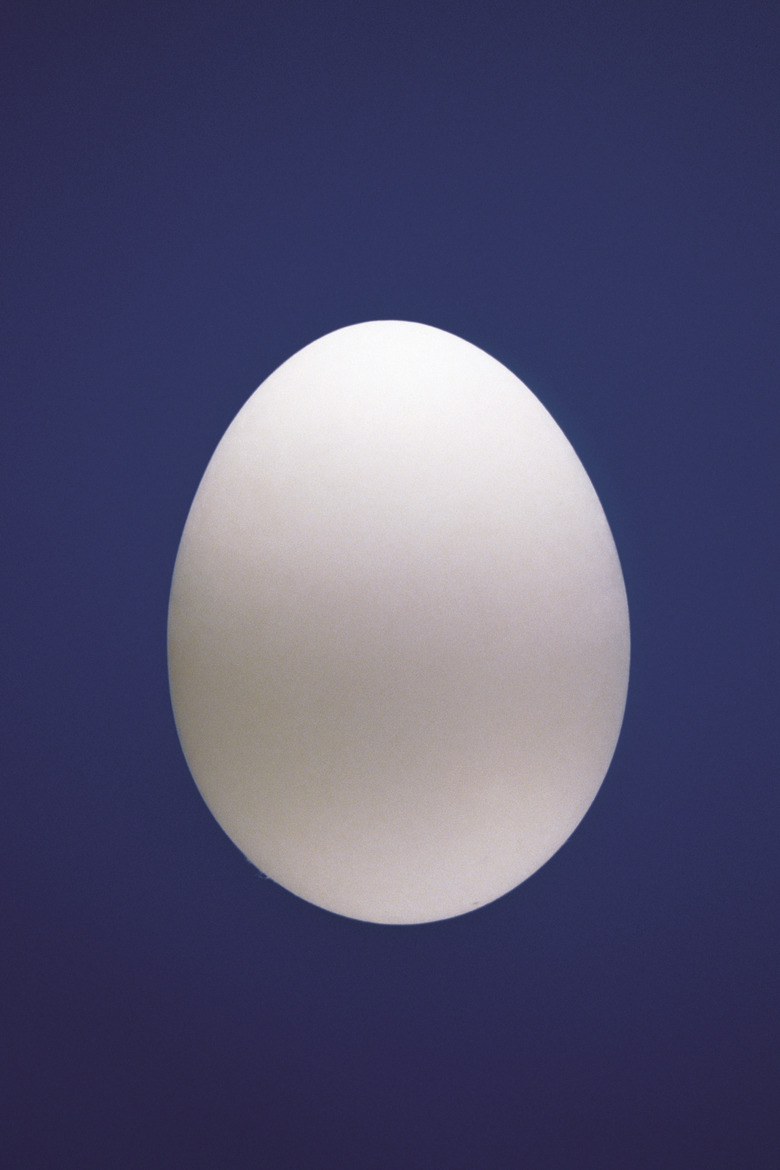Physics Egg-Drop Experiment Ideas
The egg-drop experiment is a physics class staple where aspiring mechanical engineers can test their design skills and creative thinking. Teachers often couch the project as a competition, giving prizes for effectiveness, innovation or artistic merits. Commonly, egg-drop projects include constraints on possible materials or construction methods. Check your design with your teacher or project leader before beginning to build.
Cushioned Box
Cushioned Box
One of the simplest egg drop designs is a cushioned box. A cubic frame, built out of straws, sticks or other firm materials, receives the brunt of the initial impact. The egg may be placed loose inside the box or attached to an interior structure. Inside the box, soft padding cushions the delicate cargo. Suitable cushioning materials include cotton balls, packing peanuts, bubble wrap or even crumpled paper. The necessary dimensions and quantity of padding depend on the materials used and the height of the drop.
Directional Shock Absorption
Directional Shock Absorption
While some egg-drop contraptions are free to make contact in any direction, other shock-absorption designs are intended to land nose-first. These dart-shaped devices contain a large crumple zone to absorb the pressure of impact. Often, this design requires an oversize contraption which may be against the rules of your specific competition. To ensure that the dart flies in the correct orientation, attach an aerodynamic nose cone and fins. Weighting the end of the nose more heavily than the back of the dart helps control flight, but can increase the speed at landing.
Parachutes
Parachutes
Some egg-drop designs induce drag to slow the egg's fall and lessen the force of an impact. A common drag reducer is a parachute made of paper, cloth or plastic. The parachute may be a simple sheet or a complex design that allows for some air flow. Corkscrew patterns or perforated sheets control the egg's fall, preventing the device from flipping or tangling.
Suspension
Suspension
Suspension designs, although more complicated to execute correctly, have the potential to cushion a significant fall without padding or crumpling. Instead, rubber bands or other elastic materials hold the egg inside a firm outer structure. Upon impact the elastic stretches, absorbing the force and saving the egg.
Cite This Article
MLA
MacIntosh, Mary. "Physics Egg-Drop Experiment Ideas" sciencing.com, https://www.sciencing.com/physics-eggdrop-experiment-ideas-12045877/. 24 April 2017.
APA
MacIntosh, Mary. (2017, April 24). Physics Egg-Drop Experiment Ideas. sciencing.com. Retrieved from https://www.sciencing.com/physics-eggdrop-experiment-ideas-12045877/
Chicago
MacIntosh, Mary. Physics Egg-Drop Experiment Ideas last modified August 30, 2022. https://www.sciencing.com/physics-eggdrop-experiment-ideas-12045877/
